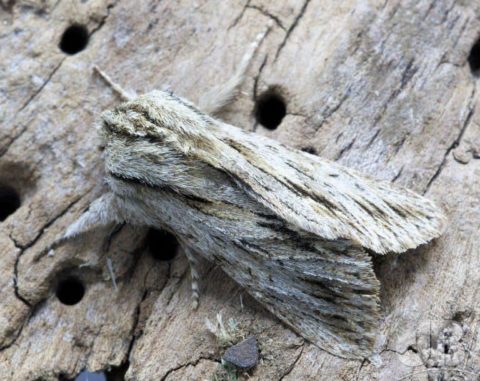The Sprawler moth seems to spread its forelegs wide when it’s at rest on a chunk of wood. Its delicate patterning gives it something of a resemblance of a bark surface, perhaps. But, it is its scientific name that is a little curious and needs further explanation.

Lepidopterists originally referred to The Sprawler as Cassinia after the Italian astronomer Giovanni Domenico Cassini who lived from 1625—1712. It was first cited by Hufnagel in 1766. But, why was it named after an astronomer? The answer lies in the behaviour of the moth’s larva, its caterpillar. When startled the little green beast rears up its spine-covered head as if gazing heavenwards. Why it does this is something of a mystery, but then much about insects remains mysterious. Perhaps the behaviour is enough to fool a predator into thinking the larva might bite back.
The Cassinia genus was dropped in recent times for the term Asteroscopus, which is a more generic term for a star gazer, one might say. The astero part from the Greek for star and scopus from the word for watching (see also telescope). So, the full scientific binomial for The Sprawler is Asteroscopus sphinx (Hufnagel, 1766).